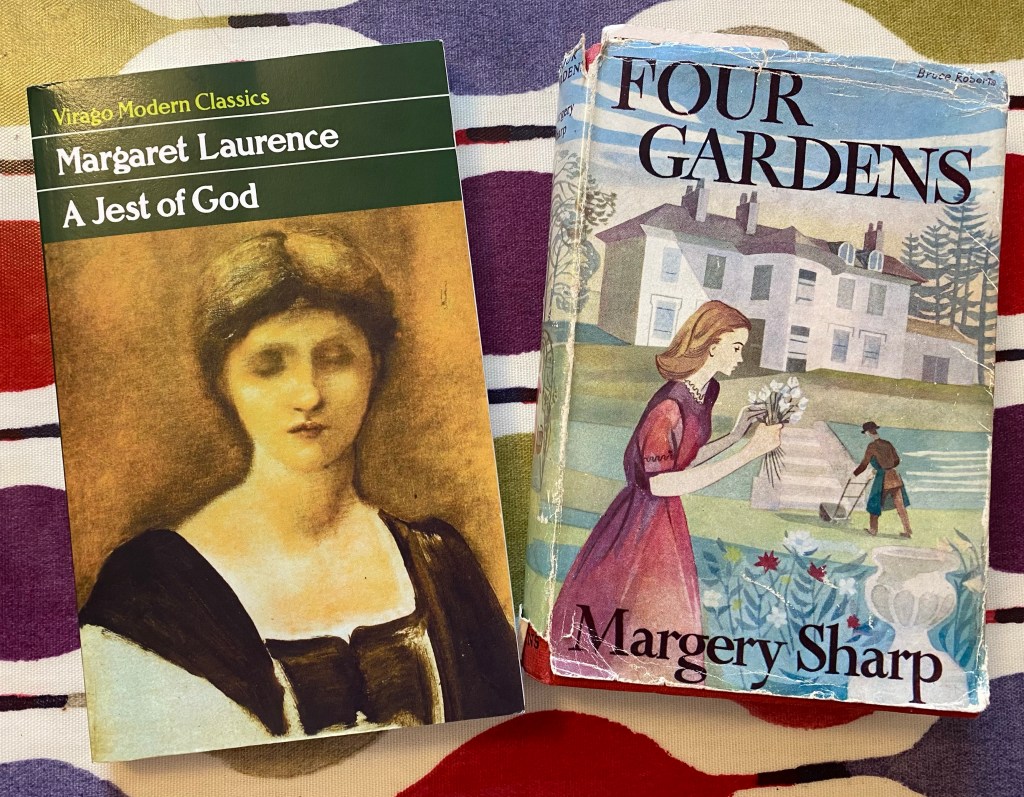For a few years now, despite my best intentions, I have entirely failed to take part in Margaret Atwood Reading Month (MARM) hosted by Buried in Print. This year I was determined to do better and I’m delighted it meant that I finally plucked Hag-Seed (2016) from the TBR.
Hag-Seed is Margaret Atwood’s retelling of The Tempest as part of the Hogarth Shakespeare Project. It’s my favourite of Shakespeare’s plays and I can be a bit precious about such endeavours, but I thought if anyone is up to the task it would be Margaret Atwood. The Tempest is such a complex play, and really quite horrible in many ways, but with fairies and magic occurring too. It’s quite a balancing act.
I realise this is probably the least controversial position I could take, but here it is: Margaret Atwood is absolutely and completely brilliant at what she does. From the start of Hag-Seed I was drawn in because she knows how to tell a compelling story, and write it with such skill. In Hag-Seed, she never loses sight of her source and there are enough references to keep Shakespeare nerds like me happy; but at the same time you could read it not knowing The Tempest at all and the novel would stand entirely on its own.
Felix Phillips is the artistic director of the Makeshiweg Theatre festival. He runs it with the help of Tony:
“Finding the money had been Tony’s thing. A lesser thing: the money was only a means to an end, the end being transcendence: that had been understood by both of them. Felix the cloud-riding enchanter, Tony the earth-based factotum and gold-grubber. It had seemed an appropriate division of functions, considering their respective talents. As Tony himself would put it, each of them should do what he was good at.
Idiot, Felix berates himself.”
Felix is alone in the world, his wife having died in childbirth and his beloved daughter Miranda following her aged three. When Tony conspires to oust Felix, no-one stands in his way, least of all the Minister of Heritage, Sal O’Nally:
“The Sound of Music, said Sal. Cats. Crazy for You. Tap dancing. Things the ordinary person could understand. But the ordinary person could understand Felix’s approach perfectly well! What was so difficult about Macbeth done with chainsaws? Topical. Direct.”
Atwood has a lot of fun with references to Felix’s outlandish productions, both those past and The Tempest he was planning to stage before Tony’s takeover. As someone who has sat through many … interesting … theatrical choices over the years I really enjoyed these brief asides.
Felix disappears to a rurally isolated shack to lick his wounds and prepare his revenge, with only the ghost of his daughter for company:
“She never asked him how they came to be there together, living in the shanty, apart from everyone else. He never told her. It would have been a shock to her, to learn that she did not exist. Or not in the usual way.”
His ‘most auspicious star’ arrives in the shape of Estelle – lover of sparkly earrings and someone who wields enough power to help Felix direct his fate. She gets him a job under the pseudonym of Mr Duke, putting on productions with a cast from Fletcher County Correctional Institute, using actors with stage names like 8Handz, WonderBoy, and Shiv. After a few years, Felix is ready to enact his revenge.
“We’re doing The Tempest, he said.
‘Oh,’ said Estelle, dismayed. He knew what she was thinking: way too gay.”
Like Prospero in The Tempest, Felix remains a problematic protagonist. He drives the action by using people, consumed by his own vision of revenge. The prisoners are not fully realised characters and I think this is deliberate. Although Hag-Seed is narrated in the third person, it’s all from Felix’s point of view and for him the prisoners are, in the main, a means to an end.
One aspect Atwood didn’t explore is the role of Caliban and post-colonial readings of The Tempest. Caliban can really dominate productions alongside Prospero, but in Hag-Seed his character – or equivalent character – is not a focus. Ideas often explored in productions now around colonisation and slavery were not present. There is some racism from Felix in his casting notes, but the fact that the prisoners are a much more diverse group than the theatre world and politicians is pretty much left alone. Perhaps she felt there wasn’t space, and for the sake of a tight narrative she had to pick a focus.
Atwood brilliantly builds towards Felix’s vengeful denouement and I found it tense and perfectly executed. The ending of the novel follows that of the play by containing almost as many questions as it resolves, yet it was ultimately satisfying.
“Fear can be very motivating. Sea-changing, you might say.”
Hag-Seed isn’t just a clever reworking of scenes and structure though, or word play and puns, as enjoyable as those are. I thought it captured the deep-rooted sadness in the play and the themes around the emptiness of revenge, the loneliness of humans, and the endurance of grief. It demonstrated how people can imprison themselves, and was truly moving to the final line.
There’s an interesting article by Margaret Atwood on writing Hag-Seed here.
“It’s the words that should concern you, he thinks at them. That’s the real danger. Words don’t show up on scanners.”
To end, Prospero’s Act IV speech that I never make it through dry-eyed:



